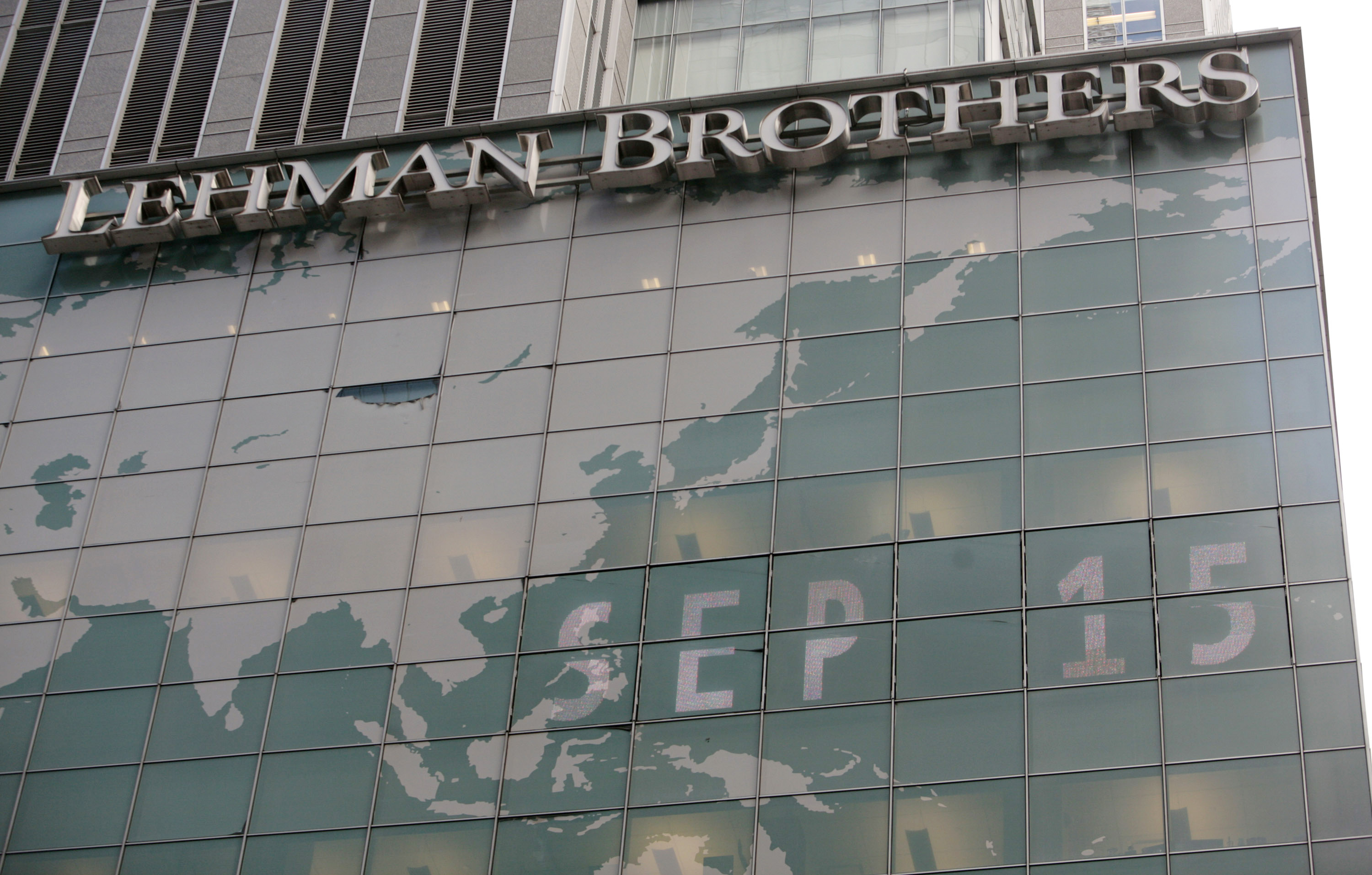2008 financial crisis: the collapse of Lehman Brothers
Lehman Brothers’ headquarters in New York on September 15, 2008, the day the Wall Street titan fell (NICHOLAS ROBERTS)
Paris (AFP) – Once a titan of world finance, investment bank Lehman Brothers collapsed 10 years ago, triggering the worst crisis in global finance since the Great Depression.
Here is a look back at the 18 months that led up to Lehman’s dramatic declaration of bankruptcy on September 15, 2008.
– Early 2007: subprimes backfire –
In February, several US banks specialized in subprime mortgages — which are risky but classified as safe investments by credit ratings agencies — go bankrupt.
These loans with variable interest rates given to households with fragile finances backfire on lenders when millions of borrowers are unable to make monthly payments that climb with rising interest rates.
When these subprime lenders go bankrupt, some analysts talk about the “risk” to financial markets, but most are optimistic, judging the sector will have a minimal impact on the US economy.
– Summer 2007: banks, markets hit –
In June, the investment bank Bear Stearns announces its hedge funds involved in subprime loans are in trouble. It is the first major bank to be subjected to damages in the crisis.
Turmoil intensifies in July and August and world markets are shaken when banks such as BNP Paribas in France reveal their own investments in high-risk loans.
The internal banking market is hit — banks hesitate to make loans to each other– while several central banks intervene, injecting billions of liquidity into the financial system.
– End 2007: Lehman’s confident –
While the major world banks (UBS, Citigroup) suffer due to the subprime crisis, Lehman Brothers publish record annual results in December 2007, with a net profit of $4.2 billion.
The New York investment bank makes no mention of a new depreciation nor any provision to clean up the consequences of the subprime crisis, instead praising itself for its ability to operate above the cycles of the market, thanks to its diversification.
But between August 2007 and January 2008, Lehman’s eliminates 3,000 mortgage-related jobs.
– Early 2008: widespread panic –
On January 22, 2008, faced with plunging world markets, the US Federal Reserve slashes interest rates by 3.5 percent, an exceptional measure, followed by a new cut by a half percentage point a week later.
The next month in the UK, the government steps in to nationalize Northern Rock, the fifth-largest bank in the country but now in crisis.
In March, JP Morgan Chase buys Bear Stearns for next to nothing, and 15 times less than its market capitalization, in a bid to avoid escalating collapse. The market predicts Lehman Brothers, which eliminates another 1,400 jobs at the start of the month, could be the next bank to fall.
– Summer 2008: titan no more –
On June 2, the credit rating agency S&P cuts its rating for Lehman Brothers to “A” from its previous “A-plus.”
A week later, Lehman Brothers announces an anticipated quarterly loss of $2.8 billion, its first since the bank appeared on the stock market in 1994.
It seeks any way to raise liquidity, notably in looking for potential partners. Hopes are raised with Korea Development Bank, but on September 10, the South Korean bank announces an end to talks.
The same day, Lehman Brothers publishes catastrophic results.
The US Treasury fails to organize a buyout by investors and chooses not to bail Lehman Brothers out, leaving it to declare bankruptcy on September 15.
Disclaimer: This story has not been edited by Siliconeer and is published from a syndicated feed. Siliconeer does not assume any liability for the above story. Validity of the above story is for 7 Days from original date of publishing. Content copyright AFP.


